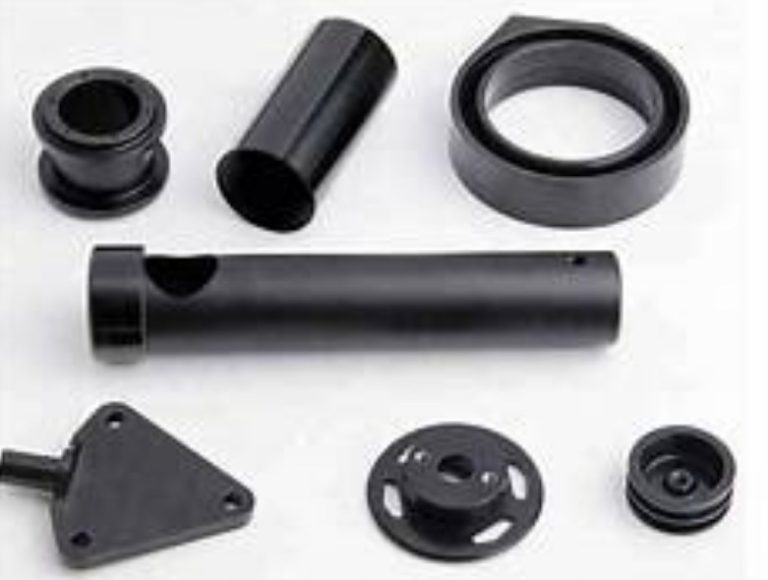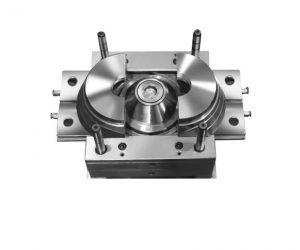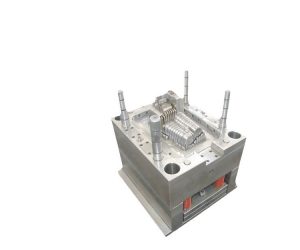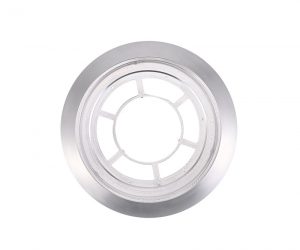The intricate dance between polymer science and the exigencies of healthcare finds its most compelling expression in the realm of plastic medical device manufacturing. These manufacturers are not mere producers; they are architects of therapeutic innovation, wielding advanced materials and manufacturing processes to shape the future of medicine. Their contribution extends far beyond the creation of tangible devices; it's a profound influence on the very fabric of patient care and clinical practice.
The design phase is a crucible of expertise, where a deep understanding of biomechanics, material science, and the often-unarticulated needs of medical professionals converges. The resulting devices, ranging from minimally invasive surgical instruments to complex implantable systems and sophisticated diagnostic tools, represent a fusion of engineering prowess and clinical insight. This isn't simply about functionality; it's about optimizing ergonomics for the practitioner, maximizing patient comfort, and accelerating recovery times – a delicate balancing act between technological advancement and the human element.
Manufacturing itself is a symphony of precision. Advanced techniques, from injection molding and extrusion to 3D printing and laser ablation, are employed with unwavering adherence to stringent quality control protocols. Compliance with international standards and regulatory frameworks is not merely a formality; it's a non-negotiable commitment to patient safety and ethical responsibility. Moreover, the industry is increasingly grappling with the environmental implications of its output, actively pursuing sustainable solutions and exploring biodegradable alternatives to traditional plastics.
The impact of these innovations is multifaceted. The enhanced durability and longevity of plastic medical devices translate directly into reduced healthcare costs and optimized resource allocation. Their lighter weight and improved ergonomics alleviate the physical demands on medical personnel, contributing to improved workplace efficiency and reduced risk of injury. Furthermore, the capacity for customization, driven by advancements in additive manufacturing and personalized medicine, allows for the creation of devices tailored to individual patient needs, resulting in superior treatment outcomes and heightened patient satisfaction.
However, the path of innovation is not without its challenges. The selection and optimization of biocompatible polymers demand continuous research and development, pushing the boundaries of material science to meet the ever-evolving demands of medical applications. The regulatory landscape is a dynamic and complex terrain, requiring constant vigilance and proactive adaptation to ensure compliance and maintain market access. The industry must also navigate the ethical considerations surrounding the long-term effects of plastic implants and the potential for microplastic contamination.
In conclusion, the role of plastic medical device manufacturers in shaping the healthcare landscape is undeniable. Their contributions extend far beyond the creation of products; they are catalysts for innovation, driving advancements in medical technology and improving the lives of countless patients. As the industry continues to evolve, addressing both technological and ethical challenges, its potential to revolutionize healthcare remains immense.
The Algorithmic Heart: Navigating the Labyrinthine World of Plastic Medical Device Manufacturing
The seemingly innocuous plastic medical device—a silent, ubiquitous participant in the drama of modern healthcare—belies a complex ecosystem of innovation, regulation, and ethical considerations. This isn't merely the production of disposable syringes; it's the orchestration of a symphony of materials science, biocompatibility, and precision engineering, all conducted under the ever-watchful eye of stringent regulatory bodies. This exploration delves into the shadowy corners and brightly lit laboratories where these devices are conceived, manufactured, and ultimately, impact the human condition.
Beyond the Scalpel's Edge: The Manufacturers' Unseen Hand
Plastic medical device manufacturers are not mere assemblers; they are architects of therapeutic interventions. Their role transcends the purely functional; it's deeply interwoven with the very fabric of medical advancement. These entities, often operating within a globalized, fiercely competitive landscape, are simultaneously innovators, regulators, and risk managers. Their collaborations with clinicians, bioengineers, and material scientists represent a complex interplay of expertise, often pushing the boundaries of what's medically possible. The success of these collaborations hinges not only on technological prowess but also on an intricate understanding of regulatory pathways, intellectual property rights, and the ever-shifting sands of market demand.
A Panoply of Polymers: The Expanding Arsenal of Plastic Medical Devices
The range of plastic medical devices is staggering, a testament to the material's versatility and adaptability. We move beyond the readily apparent—syringes, catheters, and intravenous tubing—to encompass the sophisticated world of implantable devices, bioresorbable scaffolds, minimally invasive surgical instruments, and advanced drug delivery systems. The choice of polymer itself is not arbitrary; it's a carefully considered decision based on biocompatibility, mechanical properties, degradation profiles, and sterilization compatibility. This selection process is further complicated by the need to balance performance characteristics with cost-effectiveness and regulatory compliance. The resulting devices are not simply inert components; they are active participants in complex biological processes, demanding a level of precision and predictability that only cutting-edge manufacturing techniques can provide.
The Paradox of Plastic: Advantages, Challenges, and the Unforeseen Consequences
The advantages of plastic in medical device manufacturing are undeniable: biocompatibility, sterilizability, cost-effectiveness, and the ability to be molded into intricate shapes. However, this seemingly utopian material also presents significant challenges. The environmental impact of plastic waste, the potential for leaching of harmful substances, and the ever-present risk of device failure demand constant vigilance and innovation. Furthermore, the regulatory landscape is a shifting terrain, demanding continuous adaptation and a commitment to rigorous quality control. The future of plastic medical device manufacturing will be defined not only by technological advancements but also by a profound commitment to sustainability, ethical considerations, and a deep understanding of the long-term consequences of our choices. The algorithmic heart of this industry beats to a rhythm of innovation, risk, and responsibility.
Some examples of medical devices made from plastic are:
- Surgical instruments: Plastic can be used to make disposable scalpels, forceps, scissors, clamps, and other tools that are used in surgery. Plastic surgical instruments reduce the risk of infection and cross-contamination, as well as the need for cleaning and maintenance.
- Wound care products: Plastic can be used to make bandages, dressings, gauze, tape, and other products that are used to treat wounds. Plastic wound care products are breathable, absorbent, waterproof, and adhesive, and can help prevent infection and promote healing.
- Diagnostic devices: Plastic can be used to make test strips, tubes, vials, slides, and other devices that are used to diagnose various diseases and conditions. Plastic diagnostic devices are easy to use, disposable, and accurate, and can provide rapid results.
- Implants and prosthetics: Plastic can be used to make artificial joints, valves, stents, pacemakers, cochlear implants, and other devices that are implanted or attached to the body. Plastic implants and prosthetics are lightweight, durable, biocompatible, and customizable, and can restore or enhance the function of the body.
The Paradox of Plastic in Medicine: A Critical Analysis
The ubiquitous presence of plastic in medical devices presents a compelling paradox: a material simultaneously enabling groundbreaking advancements and posing significant, multifaceted challenges. While its inherent properties drive innovation, inherent limitations and ethical considerations demand a nuanced perspective beyond superficial advantages.
The Janus Face of Biocompatibility:
The assertion of inherent biocompatibility in plastics requires critical examination. While certain polymers exhibit remarkable inertness, the long-term effects of leaching, degradation products, and potential inflammatory responses remain areas of ongoing investigation. The "safety" of these materials is not absolute but contingent upon rigorous testing, precise manufacturing, and a thorough understanding of the complex interplay between polymer chemistry, device design, and the human biological milieu. Furthermore, the very notion of "biocompatibility" is context-dependent, varying significantly across different polymer types, device applications, and individual patient physiologies. The seemingly straightforward advantage of biocompatibility thus reveals itself as a multifaceted challenge demanding continuous vigilance and refinement.
Innovation's Razor's Edge: A Double-Edged Sword:
Technological advancements in materials science, additive manufacturing, and miniaturization have undeniably revolutionized plastic medical device design. However, this rapid innovation introduces a new set of complexities. The accelerated pace of development often outstrips the comprehensive understanding of long-term implications, particularly regarding the biodegradability and environmental impact of novel materials. The integration of "smart" technologies, while promising enhanced diagnostics and treatment, also raises concerns about data security, algorithmic bias, and the potential for unintended consequences stemming from complex system interactions. The very drive for innovation, therefore, necessitates a parallel commitment to rigorous ethical review and long-term safety monitoring.
Navigating the Regulatory Labyrinth: A High-Stakes Game:
The regulatory landscape governing plastic medical devices is a complex and ever-evolving terrain. Compliance demands not only adherence to stringent quality standards and safety regulations but also proactive engagement with evolving scientific understanding and ethical considerations. The inherent variability in material properties, manufacturing processes, and sterilization techniques necessitates a highly sophisticated quality control infrastructure. Furthermore, the increasing complexity of device designs, coupled with the integration of advanced materials, presents significant challenges in validation and verification, demanding sophisticated engineering expertise and interdisciplinary collaboration. Failure to navigate this regulatory labyrinth effectively can have catastrophic consequences, underscoring the high stakes involved in plastic medical device manufacturing. The challenge is not merely compliance, but the proactive anticipation and mitigation of potential risks inherent in a rapidly evolving technological landscape.
Plastic medical devices are widely used in various applications, such as surgical instruments, implants, diagnostic equipment, and drug delivery systems. However, manufacturing these devices poses several challenges that require careful consideration and planning. Some of the main challenges are:
- Regulatory compliance: Plastic medical devices must meet strict standards and regulations from various authorities, such as the FDA, ISO, and CE. These regulations cover aspects such as biocompatibility, sterility, quality, safety, and performance of the devices. Manufacturers need to ensure that their products comply with the relevant regulations and undergo rigorous testing and validation processes.
- Material selection: Choosing the right plastic material for a medical device is crucial, as it affects the functionality, durability, and compatibility of the device. Manufacturers need to consider factors such as mechanical properties, chemical resistance, thermal stability, electrical conductivity, optical clarity, and colorability of the plastic material. Additionally, they need to account for the potential interactions between the plastic material and the human body or other substances, such as drugs or fluids.
- Design optimization: Designing a plastic medical device involves balancing multiple requirements and constraints, such as functionality, aesthetics, ergonomics, manufacturability, and cost. Manufacturers need to use advanced design tools and techniques, such as computer-aided design (CAD), finite element analysis (FEA), and computational fluid dynamics (CFD), to optimize the design of the device and reduce errors and defects. They also need to collaborate with stakeholders, such as clinicians, patients, and regulators, to ensure that the design meets their needs and expectations.
- Manufacturing process: Manufacturing a plastic medical device involves various processes, such as injection molding, extrusion, blow molding, thermoforming, and 3D printing. Each process has its own advantages and disadvantages in terms of speed, accuracy, flexibility, scalability, and cost. Manufacturers need to select the most suitable process for their product and optimize the process parameters, such as temperature, pressure, speed, and time. They also need to implement quality control measures, such as inspection, testing, and traceability, to ensure the consistency and reliability of the product.
The Labyrinthine World of Plastic Medical Devices: A Complex Interplay of Innovation, Regulation, and Risk
The seemingly straightforward field of plastic medical device manufacturing is, in reality, a complex and often unpredictable ecosystem. While giants like Medtronic, Johnson & Johnson, GE Healthcare, BD (Becton, Dickinson and Company), and Stryker dominate the landscape, their influence is interwoven with a web of smaller, specialized firms, each contributing to a fragmented yet interconnected supply chain. These behemoths leverage extensive research and development capabilities, fostering innovation in areas ranging from minimally invasive surgical instruments to sophisticated implantable technologies. However, their dominance is constantly challenged by disruptive technologies and the ever-shifting sands of regulatory compliance. The sheer scale of their operations, encompassing global distribution networks and intricate manufacturing processes, introduces inherent vulnerabilities and unforeseen complexities.
Beyond the Titans: A Deeper Dive into the Ecosystem
The narrative of plastic medical device manufacturing extends far beyond the marquee names. Consider the intricate interplay of material suppliers, specialized component manufacturers, and contract manufacturers, each contributing a crucial piece to the final product. The selection of biocompatible polymers, a critical aspect often overlooked, presents a minefield of potential complications. Slight variations in polymer composition, processing techniques, or sterilization methods can dramatically alter the device's biocompatibility, efficacy, and longevity, potentially leading to catastrophic consequences. Further complicating matters is the ever-evolving regulatory landscape, demanding rigorous testing and documentation to ensure patient safety.
The Perilous Path of Innovation: Navigating Regulatory Hurdles and Market Volatility
The drive for innovation, while essential for advancing healthcare, introduces significant challenges. The development and approval of novel medical devices is a protracted and costly endeavor, fraught with regulatory hurdles and unpredictable market forces. The failure rate for new medical devices is substantial, highlighting the inherent risks associated with pushing the boundaries of medical technology. Moreover, the increasing demand for personalized medicine further complicates the manufacturing process, requiring greater flexibility and customization capabilities.
Polyvinyl Chloride (PVC): A Case Study in Complexity
The ubiquitous use of PVC in medical devices, while offering advantages in terms of flexibility and cost-effectiveness, presents its own set of challenges. Concerns regarding the leaching of plasticizers and the potential for adverse health effects necessitate ongoing research and stricter regulatory oversight. The inherent limitations of PVC, such as its susceptibility to degradation and potential for incompatibility with certain sterilization methods, necessitate careful consideration in device design and manufacturing.
The Shifting Sands of Market Leadership:
While Medtronic currently holds a prominent position as a leading medical device manufacturer, the competitive landscape is dynamic and unpredictable. Emerging technologies, shifting market demands, and strategic acquisitions constantly reshape the industry hierarchy. The title of "largest medical device manufacturer" is not a static designation but rather a fluid reflection of market forces and technological advancements. Similarly, the identification of the "largest supplier of medical supplies" is highly context-dependent, varying by region, product category, and specific market segment. McKesson, Cardinal Health, and BD represent significant players, but their dominance is not absolute.
Conclusion: A Future Defined by Uncertainty and Adaptation
The future of plastic medical device manufacturing is inextricably linked to the ongoing evolution of materials science, regulatory frameworks, and healthcare delivery models. The industry must embrace continuous innovation while navigating the inherent complexities and uncertainties inherent in this high-stakes environment. The success of plastic medical device manufacturers hinges not only on their technological prowess but also on their ability to adapt to the ever-changing regulatory landscape and the evolving needs of a global healthcare system.




